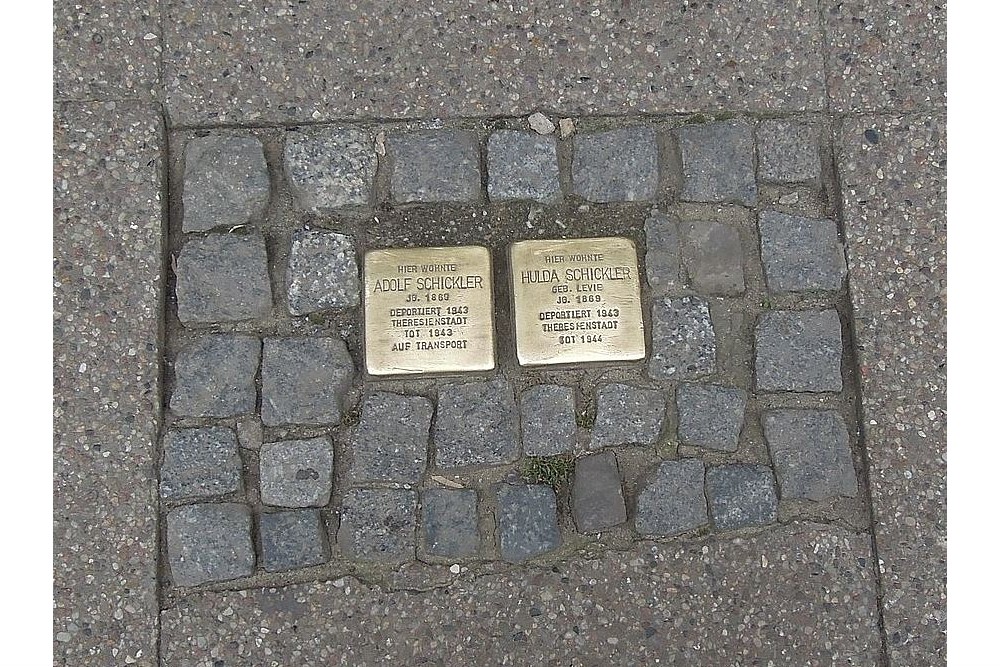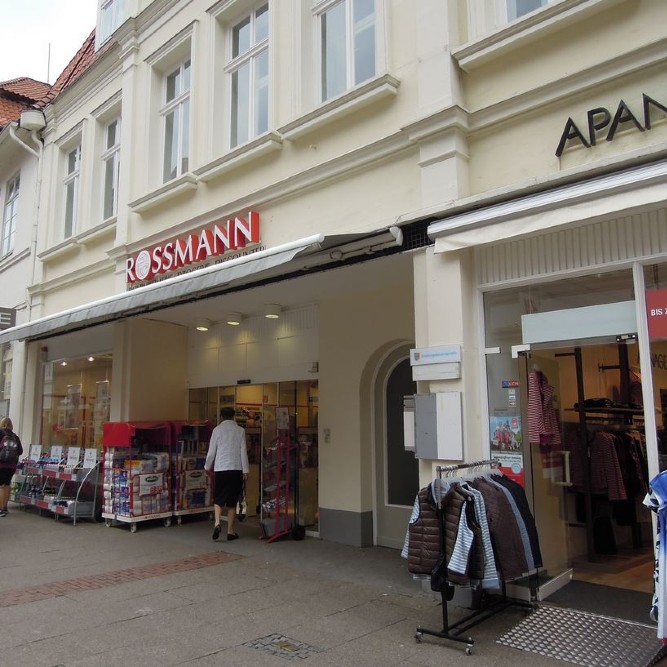Stumbling Stones Große Bäckerstraße 23
These small, brass, memorial plaques (Stolpersteine or stumbling stones) commemorate:
* Adolf Schickler, born 1869, deported 1943, Theresienstadt, dead 1943 on the transport.
* Hulda Schickler, née Levie, born 1869, deported 1943, Theresienstadt, dead 1944.
Adolf Schickler and Hulda Levy married and had four children, all born in the 1890s. From 1906, Adolf and Hulda ran a specialty shop in Lüneburg, Germany, for shoes and boys’ and men’s clothing, and he was a leader in the Jewish community. The couple retired from the shop in 1929, and their oldest son took over the business.
On 16 March 1942, Adolf and Hulda were taken to a Judenhaus in Celle. The next year in February they were moved to another Judenhaus in Hamburg. Three months later, on 5 May 1943, in a small transport of 50 persons (VI/6), they were both deported to Theresienstadt, arriving there on 7 May. Adolf was 76, Hulda 74. According to the German Federal Archives, he was dead five days later (on 12 May). Hulda survived another 16 months.
Their four children all escaped the Holocaust, living into their 70s and 80s in New York City or New Jersey in the US.
Other stolpersteine for Adolf and Hulda Schickler were installed at Im Kreise 24, Celle, Germany, where they lived before being relocated to Hamburg and deported to Theresienstadt.
"Stolpersteine" is an art project for Europe by Gunter Demnig to commemorate victims of National Socialism (Nazism). Stolpersteine (stumbling stones) are small, 10x10cm brass plaques placed in the pavement in front of the last voluntary residence of (mostly Jewish) victims who were murdered by the Nazis. Each plaque is engraved with the victim’s name, date of birth, and place (mostly a concentration camp) and date of death. By doing this, Gunter Demnig gives an individual memorial to each victim. One stone, one name, one person. He cites the Talmud: "A human being is forgotten only when his or her name is forgotten."
Do you have more information about this location? Inform us!
Source
- Text: Fedor de Vries & Anne Palmer
- Photos: Gmbo 2013 (1), Gmbo 2013 (2)
- Celle Entdecken: Hulda & Adolf Schickler
- Yad Vashem Central Database of Shoah Victims’ Names
- Stolpersteine.eu
Nearby
Point of interest
- Cannonball Lüneburg - Lüneburg
- Former Security Force Headquarters of the British Army of Occupation - Lüneburg
Monument
- War Memorial Fallen - Lüneburg
- Memorial Bergen-Belsen Trials Lüneburg - Lüneburg
- Memorial Stone Timeloberg - Wendisch Evern
Cemetery
- Graves Prisoners of War Different Nationalities Zentralfriedhof Lüneburg - Lüneburg
- German War Graves Zentralfriedhof Lüneburg - Lüneburg






